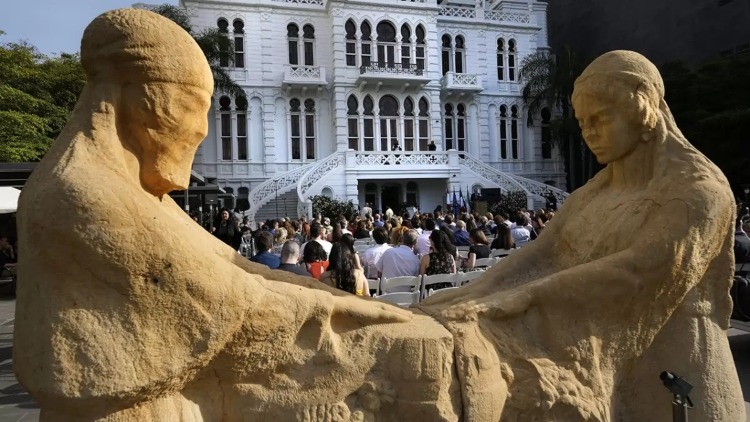It’s been nearly three years since the devastating explosion that happened in Beirut’s port due to improperly stored chemicals, leaving everything it touched in ruins, including the iconic Beirut Sursock museum. With assistance from France, Italy, UNESCO, and a number of private organizations, the museum was able to raise almost $2 million to repair the building and restore damaged artwork.

At the reopening on Friday night, many gathered at the expansive tree-lined courtyard of the Beirut Sursock Museum and were serenaded by a choir performance on the entry stairs. Sighs of admiration could be heard as the museum seemed practically the same as it had before the explosion, “I now hope all the friends of the Sursock who may have left Lebanon in recent years at least come back to visit us,” the museum’s chairman, Tarek Mitri, told The Associated Press as he greeted guests.
The museum was originally a private estate built in 1912 on a hilltop overlooking the beautiful city of Achrafieh, the highest point in east Beirut. The villa belonged to Lebanese art collector and art fanatic Nicolas Ibrahim Sursock who later bequeathed his beloved Venetian and Ottoman-era inspired home to his people. In 1999, the house was classified as a class A historical building by the Directorate General of Antiquities.
The architectural revamp included a four-floor explanation beneath the museum’s garden, resulting in an additional 7,000 square meters in the museum’s surface area; it’s now five times the size it was previously. Thanks to the outpouring of solidarity after the blast, the museum now includes the components it needs to operate as a cutting-edge, state-of-the-art cultural institution.



